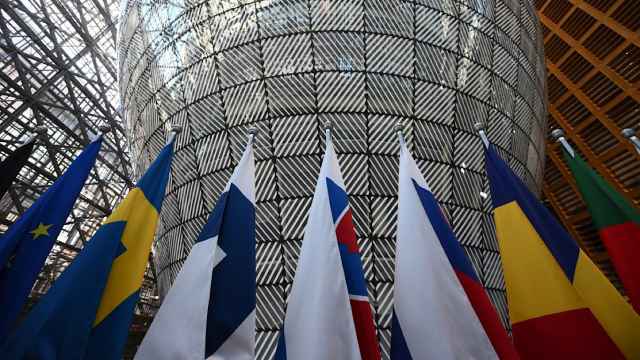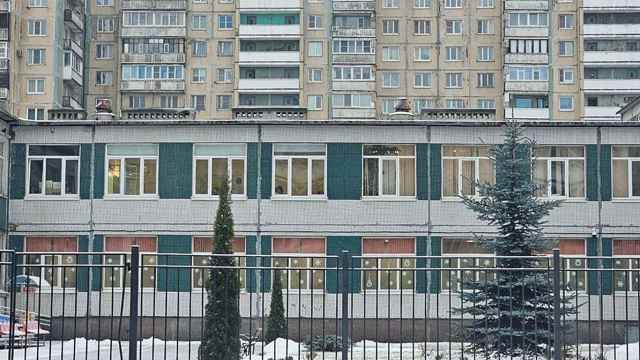OSLO, Norway — Some of Russia's smog-causing peat bog fires are likely to burn for months, part of a global problem of drained marshes that emit climate-warming greenhouse gases, experts said.
Novel carbon markets could offer a long-term fix for peat bogs, from Indonesia to South Africa, if negotiators of a United Nations climate treaty can agree on ways to pay to safeguard marshes that are often drained to make way for farms, roads or homes.
"Peat fires continue underground, and … they will not be extinguished in Russia before winter rains and snow set in," said Hans Joosten, professor of peatland studies and paleoecology at the University of Greifswald in Germany.
To put out fires, "you must inundate the area completely," he said, adding that one peat fire in South Africa near the border with Botswana, for instance, had smoldered for five years. Peat is formed from partly decayed vegetation.
The environmental group Wetlands International estimates that 80 percent to 90 percent of the smog in Moscow was from peat bog fires near the capital, rather than forest fires linked to what weather officials call Russia's hottest summer in a millennium.
"In Russia, peat fires can sometimes last under snow cover through the winter," said Ilkka Vanha-Majamaa, a scientist at the Finnish Forestry Research Institute.
Water dumped from planes, part of Russia's response, is rarely enough to halt peat fires, said Alex Kaat, spokesman for Wetlands International. Moscow has pledged more action to extinguish the blazes.
"Russia promised the same after peat fires in 2002, and nothing was done," Kaat said.
Past efforts to use water from the Volga River to soak peatlands have been halfhearted, he said.
Russia has the largest national carbon emissions from peatland destruction after Indonesia, according to Wetlands International.
And the UN panel of climate experts warned Moscow of problems of global warming and peat in its last report in 2007.
"During dry years, catastrophic fires are expected on drained peatlands in European Russia," it said, calling for a restoration of water supplies to reverse drainage.
Peat releases carbon dioxide, the main greenhouse gas, as it dries out. Peat is also often cut and used as a low-grade fuel.
Joosten, who is also secretary-general of the International Mire Conservation Group, said there are 500,000 square kilometers of drained peatlands in the world — the size of Spain. "To my mind, that is 500,000 square kilometers too much," he said.
Wetlands International estimates that drained peatlands account for 6 percent of carbon dioxide emissions from human sources. The UN climate panel says global warming stokes desertification, wildfires, floods and rising sea levels.
Joosten said current projects for re-wetting peatlands in Belarus and Ukraine were attracting interest from investors in voluntary carbon dioxide markets. But such credits were worth only a few euros per ton of avoided emissions.
A problem is in agreeing on how much a peat bog emits.
A hectare of drained peatland in central Europe, used for agriculture, probably emits about 25 tons of carbon dioxide a year from continuing decay, Joosten said.
But natural peat marshes emit methane, another powerful greenhouse gas, so protecting peat does not eliminate emissions. Joosten estimated an intact hectare of wet peat emits the equivalent of 10 to 15 tons of carbon dioxide annually.
A Message from The Moscow Times:
Dear readers,
We are facing unprecedented challenges. Russia's Prosecutor General's Office has designated The Moscow Times as an "undesirable" organization, criminalizing our work and putting our staff at risk of prosecution. This follows our earlier unjust labeling as a "foreign agent."
These actions are direct attempts to silence independent journalism in Russia. The authorities claim our work "discredits the decisions of the Russian leadership." We see things differently: we strive to provide accurate, unbiased reporting on Russia.
We, the journalists of The Moscow Times, refuse to be silenced. But to continue our work, we need your help.
Your support, no matter how small, makes a world of difference. If you can, please support us monthly starting from just $2. It's quick to set up, and every contribution makes a significant impact.
By supporting The Moscow Times, you're defending open, independent journalism in the face of repression. Thank you for standing with us.
Remind me later.





